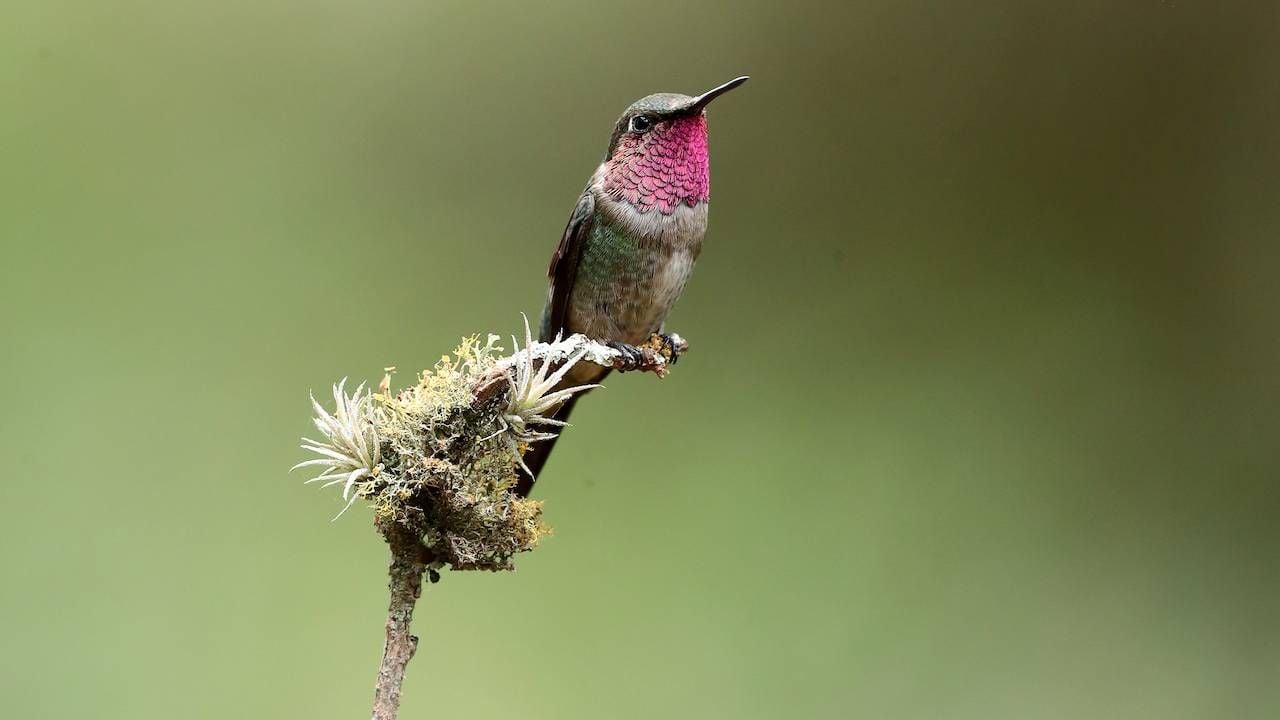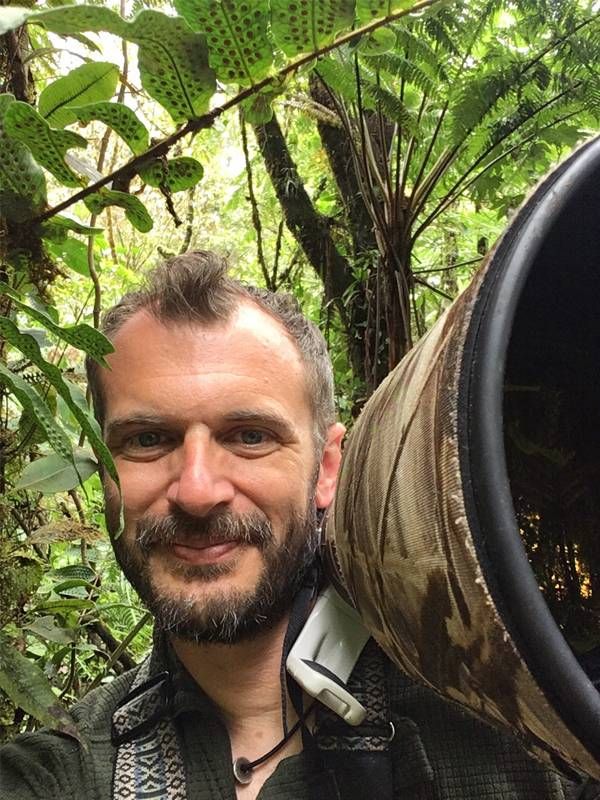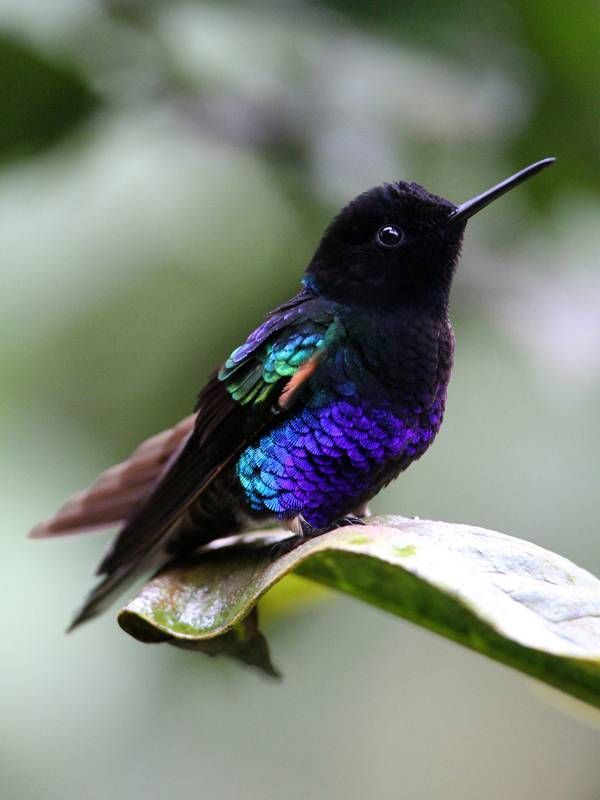Hummingbirds: More Than Little Blurs At Your Bird Feeder
Author Jon Dunn tells all about hummingbirds: the fast-paced birds he calls "dipped in rainbows'
Jon Dunn summed up his passion for hummingbirds succinctly. "You're dead inside if you don't like hummingbirds," he said. The 48-year-old naturalist and photographer's personal paean to the tiny flying gems, "The Glitter in the Green," chronicles Dunn's far-flung travels to find and photograph the birds he describes as being "dipped in rainbows."

Since nearly everyone I know with a backyard or deck has at least one hummingbird feeder hanging out, Next Avenue tracked down Dunn at his lair in the Shetland Islands (just north of Scotland) and asked him to share some insights from his book. His responses have been edited for brevity and clarity.
Next Avenue: You've photographed and written about all manner of wildlife, but hummingbirds are the only species to which you've devoted an entire book. It seems from your writing that it's their tenacious personality as much as their color that attracts you.
Jon Dunn: Yeah, my theory is that we're used to a lot of wildlife treating us with caution and we've given them ample cause to do so. You know, we've had millennia now of treating the natural world as a resource to be used by us. Generally in the wild we can't get that close to things, but hummingbirds are different.
Even in the wild they'll feed, relatively unconcerned by our approach. They just do not perceive us as a threat. And I think that deep down that's really reassuring for us.
"The main place you'll see hummingbirds interacting aggressively to one another is around a food source, because they'll defend the food so vehemently."
It almost takes us back to that innocence of childhood, where there is an animal which is interacting with us and it sees us as completely benign and nonthreatening.
And it's also a really beautiful bird. Many of the folklore stories have the hummingbird as either a messenger of the gods or a very benign entity in the mythological world.
Benign but incredibly 'pugnacious,' as you describe them. Where does that come from?
Their diet is primarily nectar. They also need some insects for roughage and protein, but primarily it's a high-octane diet of nectar. If you're feeding on high-octane fuel, you really need that fuel. And if you don't get it, you're in a lot of trouble.
The main place you'll see hummingbirds interacting aggressively to one another is around a food source, because they'll defend the food so vehemently. There'll also be some interaction of males trying to impress a mate or to drive away a competitor for a female. Yeah, food and sex, but mainly food. That's where they get their fierce tempers.
They're also some of the most remarkable little machines in the animal kingdom.
They really are. I mean, their hearts can beat a thousand to one thousand and two hundred times a minute, which, when you think that our average heartbeat's about eighty beats per minute, that's amazing in itself.

And at night, of course, they've got to sleep and they can't feed. And so the whole hummingbird kind of shuts down and they enter a state of torpor and they slow their heartbeats right down to under a hundred beats per minute, so its energy requirements are just pulled right back. And then when day breaks and the hummingbirds awaken, they effectively reanimate and come back to life.
And somehow they have the energy to migrate thousands of miles every year.
Yeah, that's right. The rufous hummingbird -- it's one of the smaller hummingbirds -- a female was ringed (banded) in Tallahassee, Florida and recovered up in Alaska. She'd covered almost three and a half thousand miles.
That's a huge migration by any standards, but for a bird which weighs effectively the same as a penny, that's just mind-boggling to me. And also, you know, for a bird which is largely fueled on sugar. That's amazing, too.
What these birds are doing is kind of surfing the advent of spring, where they're trying to move north just as stuff is starting to come into bloom, which they can feed on because they don't really have fat reserves to speak of. They're not like some birds, which plump up massively, and then just go for it with a really long migration and just burn that body mass.
Speaking of eating, there's a fascinating account in the book of how they eat -- and it's probably not how many of us imagined. They're not using their bills as straws?
"What the hummingbird's tongue actually does when it's immersed in nectar, it blooms, it flowers for itself."
And I love this 'cause, you know, hummingbirds, they feed at flowers, and what the hummingbird's tongue actually does when it's immersed in nectar, it blooms, it flowers for itself.
So lots of tiny little flaps along the length of the tongue open up as it's immersed in liquid. And then when the tongue is retracted out of the liquid, the flaps close and they trap the nectar within. So the entire feeding process -- the dipping in and out of the tongue -- is feeding passively on the nectar, is not having to lap it like a cat.
It's an incredibly efficient way of feeding, because the hummingbird isn't expending any particular energy in doing this.
We've seen some alarming statistics on the dramatic drop in bird populations in recent years -- losses in the billions just in North America. How are hummers holding up? What are the major threats to them?
Well, they're not exempt from that. The numbers of rufous hummingbirds are known to have crashed. Between 1966 and 2014, that population declined by sixty two percent. That's a colossal loss of birds.
"The ripples of climate breakdown are still spreading and amplifying, and we barely comprehend their consequences at the moment."
It's just theorizing on my part, though my instinct is firmly that blame lies initially at the door of agriculture — the intensification of which has impacted massively and negatively on native plant and invertebrate biodiversity and numbers with an inevitable ripple up the food chain to the animals that depend upon either or both as food sources.
Climate breakdown, however, is surely going to have a similar impact from rendering some habitats unsuitable for specific birds' species, as their food sources and/or breeding habitat requirements will be compromised to changing the conditions in their wintering grounds -- largely out of sight and out of mind for us in the (supposedly) temperate areas of the Northern Hemisphere.
As I say in the book, the ripples of climate breakdown are still spreading and amplifying and we barely comprehend their consequences at the moment.
What would you say was your most memorable moment in pursuit of rare hummingbirds?
I have touched the 'Holy Grail,' so to speak. And that was the marvelous spatuletail, an incredible hummingbird, which is just as fabulous as the name alone suggests, found in one particular river valley in the north of Peru.

It's a tiny little bird, but with a really long filamentous tail with these big, feathery disks on the end...the spatules. This was something which was kind of a mythological hummingbird from the point it was found in the mid-nineteenth century, and fifty years would lapse before another bird was seen.
A lot of its former habitat's been lost to coffee [plantations] or sometimes marijuana cultivation. When I did see one of these birds, a male, I caught myself with my mouth hanging wide open, just staring at this bird. I could not believe it was real because they are just completely preposterous, amazing birds.
Do you have any parting tips for backyard birders who want to attract more hummers?
Yes, totally. Obviously if you're going to put a hummingbird feeder up, make sure you clean it regularly. Don't let that thing get stale and stinky, because hummingbirds need clean, fresh, sugar water. Use refined sugar rather than unrefined sugar. It needs to be the stuff which isn't good for us — the pure white stuff. It's great for hummingbird feeders.
But most important, if you've got a backyard — I can't stress this enough because we've been talking about the adverse effects of agriculture and the loss of native wildflowers — plant some native wildflowers, nectar-bearing plants. Audubon has a native plants database on their website and that is a brilliant resource to have a look at and try and pick some things which will give you some colors throughout the summer.
So, you know, you've still got a pretty yard, but at the same time something which provides successional nectar sources for the hummingbirds.

Read More

